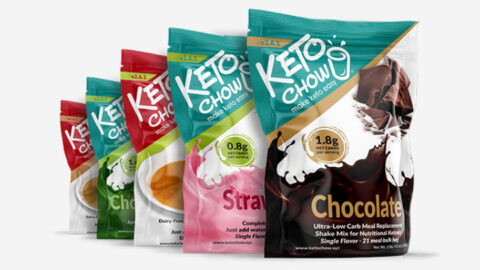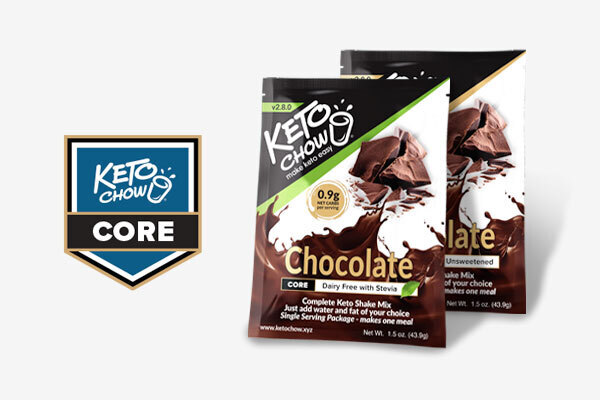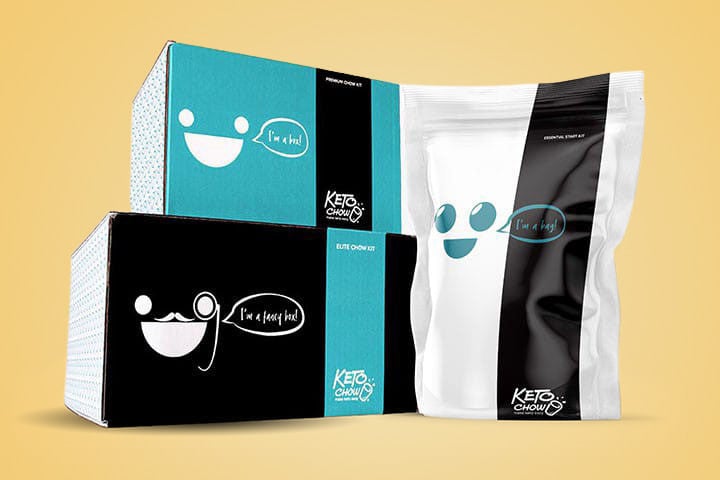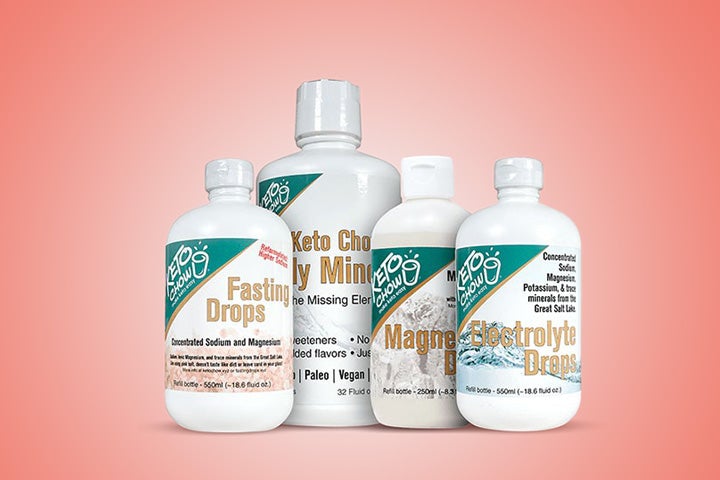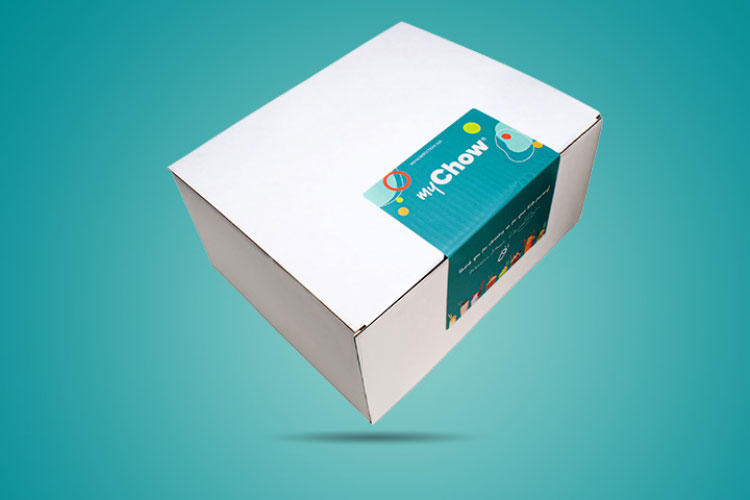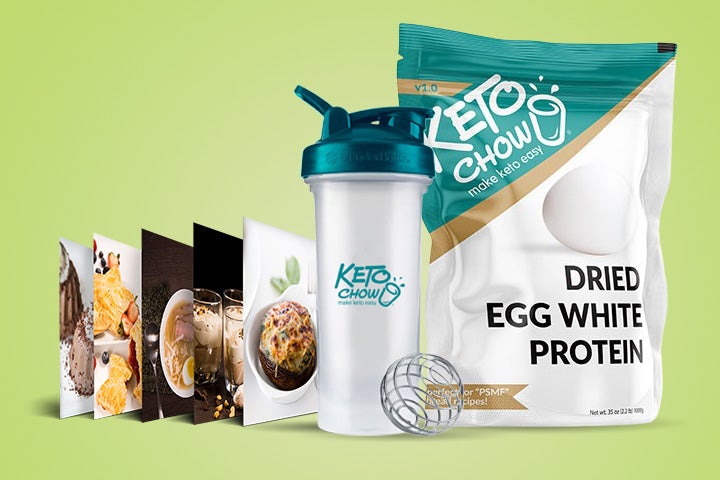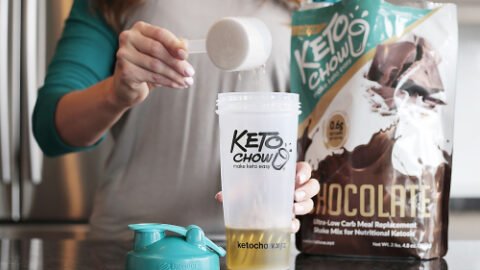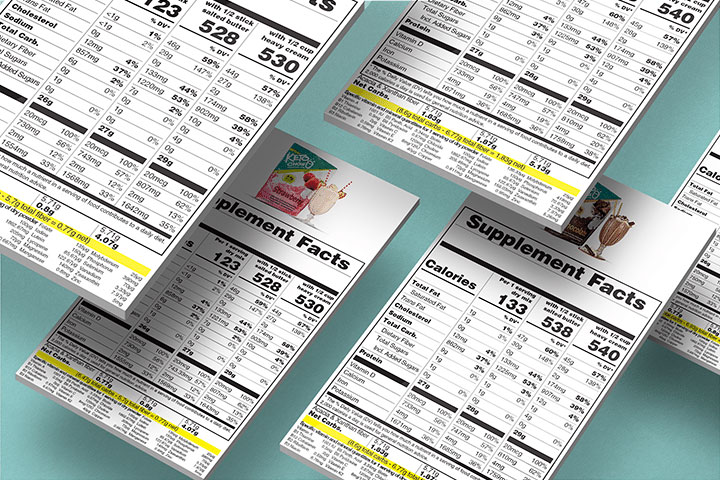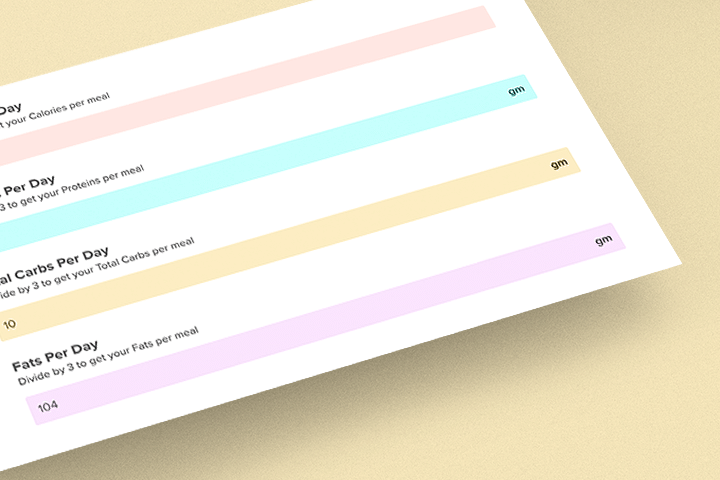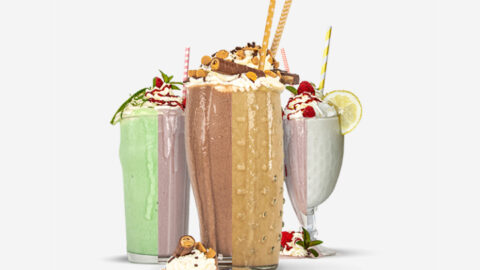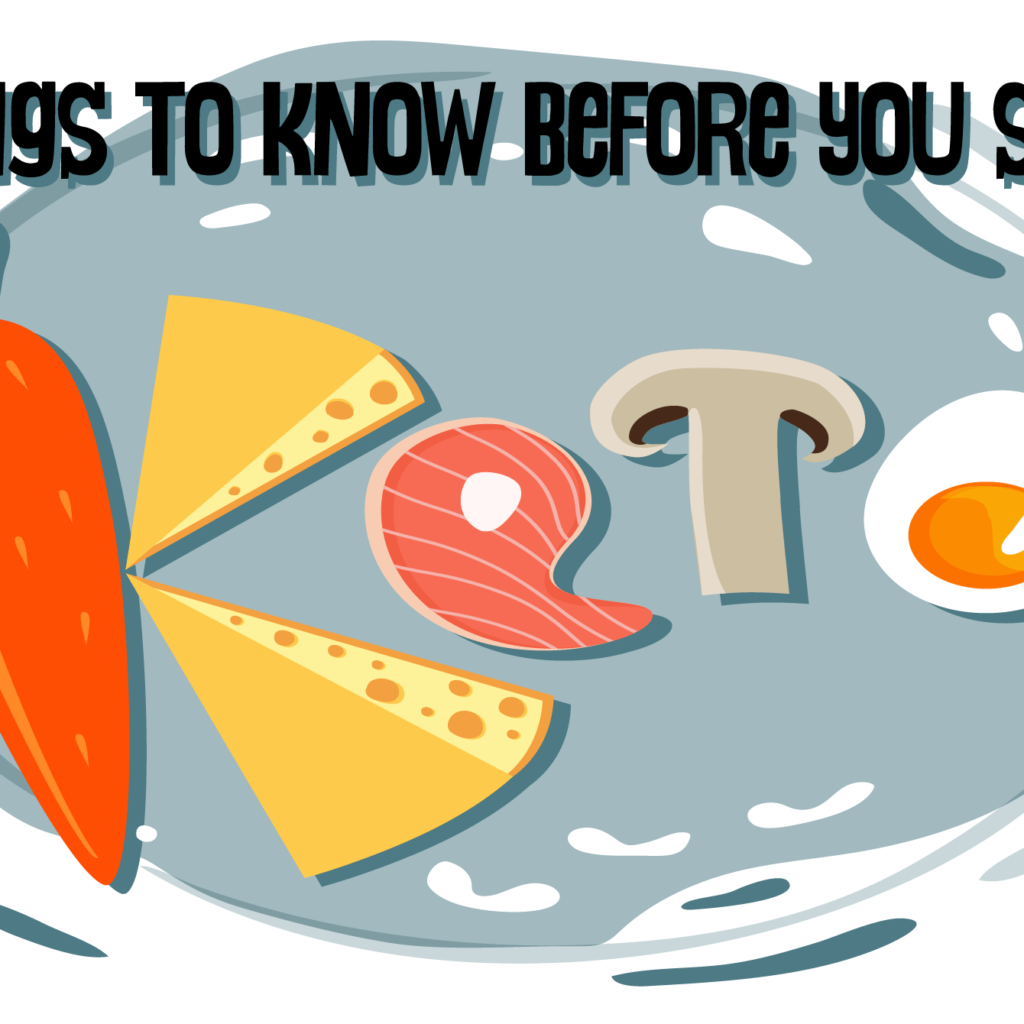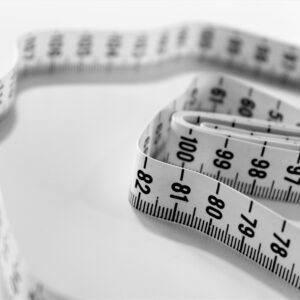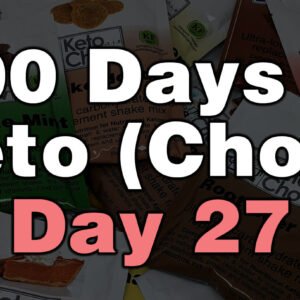You’ve watched a bunch of videos, listened to some podcasts, lurked on a few forums, and you’ve decided you’re gonna do it: you’re gonna try this keto thing. Great! Come on in, the water’s fine! And guess what? It’s as simple as cutting sugar and starch out of your diet and keeping all other carbohydrates to a minimum. Do that, and congratulations—you’re doing keto!
But wait a minute…
Not so fast.
While it’s true that all you really need to do to get started is to eliminate the majority of carbohydrates from your diet, there are a few things to be aware of before you jump into this. Let’s take a look at what you need to know before starting keto.
1. Understand what keto really is

Contrary to what you might see on social media, keto isn’t about adding butter and coconut oil to everything you eat, and it’s not about eating piles of bacon covered with bacon, with a bit of bacon on the side. (Not that there’s anything wrong with that bacon part!)
Rather than “keto,” think of this way of eating as very-low-carb. When you frame it that way, you put the emphasis where it belongs: on keeping your carbohydrate intake very low. This is the single most important part of a ketogenic diet. What makes a diet “keto” is not the presence of mountains of fat and oil, but the absence of the carbs.
You don’t need any special gadgets or gizmos to be successful on keto. This is a way of eating, not an erector set for a Mars excavator robot. You might’ve seen videos of people checking their blood sugar or ketone levels with special meters, and pictures of people’s kitchen counters decked out with bottles of MCT oil, keto bone broth protein powder, and keto coffee creamers.
If you’re a data lover—and you have a couple of thousand extra dollars floating around—you’re welcome to use these kinds of things. But if you want to keep things low-tech and simple, know this: keto is about one thing: keeping your carbohydrate intake very low.
Your body isn’t a computer. You don’t have to have a Ph.D. in math to figure out your “macros” or how many calories you should be eating. Keto doesn’t work by magical percentages of fat, protein, and carbs in your diet. You don’t need to calculate your diet down to the last microgram so that you “hit your fat macro” or “don’t eat too much protein.” What you need to do is keep your carbohydrate intake very low. Period.
2. Have realistic expectations

Keto is a very powerful way of eating that can radically transform your health and physique. But keep in mind that your transformation might not be as fast as you’d like it to be. Don’t compare your results to anyone else’s. We are all unique individuals, with our own genetics, dietary and medical histories, and lifestyle habits.
Use other people’s successes as motivation and inspiration, but don’t “compare and despair.” Start where you are, and follow your own path. If you do the right things, you’ll get to your goals; the journey might just take a little longer than you wish it would.
If you’re specifically in this for fat loss, heed these words and save yourself a mountain of frustration and disappointment: women, don’t compare your rate of fat loss to a man’s. Men tend to lose weight more quickly on keto, even when they’re not as strict with the diet. It’s unfair, it’s infuriating, but it’s just the way it is. You can’t fight biology.
Your fat loss will come; it’ll just come more slowly than it does for the men in your life. And older folks, don’t compare your fat loss to that of someone younger. There are always exceptions, but as a general rule, younger people lose fat more quickly than older people. Younger people have faster metabolisms. You can envy them that, but look on the bright side: you probably have more than ten dollars in your checking account.
Don’t get discouraged if weight loss slows down

Another note about fat loss: the more you’re looking to lose, the more quickly it’ll come off—at first. If you have a substantial amount of weight to lose, a good rate of loss is about 1-2 pounds per week. People who have less to lose will probably lose more slowly.
If you’re new to this way of eating, you might lose several pounds in the first week or two but then things will slow down. This is normal and to be expected, so be ready for it. If you find things going slower a few weeks into keto, don’t worry that you’re doing something wrong.
Whatever you’re looking to achieve with keto—fat loss, relief from migraines, more energy, clearer skin, lower blood sugar—some of it might happen right away, but other things will take longer. Play the long game and be patient. Be on the lookout for beneficial things keto is doing for you even if you haven’t gotten to your main goal. (See point 8).
3. Be prepared for keto flu

Ah yes, the dreaded “keto flu.” The truth is, most people make the transition to keto with no problems. But some people experience a few hiccups as their body adjusts to life without sugar and starch, so it’s important for you to know about these in case they happen to you.
The first thing to know is, these issues will be mild and temporary. They’ll pass quickly and they’re a small price to pay to feeling great and experiencing all the benefits of keto once your body adapts.
The most common issue is headaches. You may also feel dizzy, lightheaded, nauseated, or fatigued. Most of these can be prevented by taking in more salt. As I mentioned in a previous article, ketogenic diets increase your body’s need for sodium. Skimping on salt is usually the cause of headaches, lightheadedness, and feeling sluggish on keto.
Be generous with salt and sodium in your diet: either sprinkle it liberally on your foods or add it to your beverages, or be sure to incorporate salty foods into your diet—things like bacon, olives, pickles, or pepperoni. Not a fan of those? Make a cup of broth using a bouillon cube for an easy sodium boost.
If you experience muscle cramps (especially in the legs) that you can’t attribute to overexertion, extra magnesium usually helps. Magnesium also helps with constipation, which some people experience on keto. If sodium alone doesn’t help with headaches, add magnesium; it’s helpful for headaches, too. (Check out the electrolytes from Keto Chow for convenient ways to get sodium and other important minerals.)
4. Get professional guidance on medication

If you take medication for diabetes (either type 1 or type 2) or for high blood pressure, you must have medical supervision when you start keto. This is not negotiable! Ketogenic diets are so powerful for normalizing blood sugar and blood pressure that you may need to adjust your medication doses with days of starting.
For people with type 2 diabetes, insulin injections sometimes need to be stopped on the first day of starting the diet.1 (And people with type 1 might need to adjust their dose on day one.)
If you take the same amount of medication you needed when you were eating a high-carb diet, but now you’re on a very low-carb diet, you might end up overmedicated, and this comes with effects ranging from dizziness and fatigue to more dangerous things, such as passing out.
Don’t adjust medication on your own. Work with a physician or other qualified medical professional who can advise you on changing your medication safely, as needed.
5. Get baseline blood tests

You don’t have to have any blood tests done before starting keto, but I recommend it—you’ll want to have something to compare to after a few months so you can see how much things have improved!
Your body will give you loud and clear signals about how keto’s working for you—more energy, less joint pain, no more brain fog or heartburn—but it can be rewarding to also see objective proof that eating delicious food has had a positive impact on your health. Plus, if weight loss is a bit slow or you’re not getting closer to another goal you have, seeing certain measurements go in a favorable direction can help keep you motivated to stay on plan.
For a good baseline before starting, I recommend a comprehensive metabolic panel (CMP, which includes fasting glucose and liver enzymes), complete blood count (CBC), hemoglobin A1c, fasting insulin, C-reactive protein (CRP), and a lipid panel (cholesterol & triglycerides).
Most of these are pretty standard tests, but you might have to specifically request fasting insulin. It’s not a routine test, but it’s important. For the lipid panel, ask your doctor if they can order a particle size test. (This isn’t essential, but it’s nice to have if you can get it.)
If you suspect you might have a thyroid problem, ask for a comprehensive thyroid panel. (It’s important to ask for a comprehensive panel. If you ask for a “thyroid test,” many doctors test just one or two things, but a comprehensive panel provides much more information about thyroid function. See here for details.)
If you’ve been taking antacid medication for a while—either by prescription or over-the-counter—consider asking for a vitamin B12 test. Antacids interfere with the absorption of vitamin B12, which is critical for energy levels and healthy neurological and cognitive function.
6. Know how to order in restaurants

In an ideal world, everyone would cook all their meals at home from scratch. But over here in the real world, where you and I live, dining out is one of life’s small pleasures.
Whether you do it because you don’t like to cook, because it’s convenient, or because it’s a kind of treat and doesn’t have to cost a fortune, chances are you’ll find yourself in a sit-down restaurant or at a fast food drive-thru sometime after starting keto. Now that bread, pasta, rice, potatoes, beans, and noodles are off-limits, what can you order?!
Dining out or grabbing food on the go is easy. Just ask to swap out starchy sides in favor of non-starchy vegetables or a salad. Most restaurants will have no problem substituting steamed broccoli or roasted brussels sprouts for a baked potato or scoop of rice.
At fast food places, bun-less burgers or grilled chicken are good ways to go. (Pro tip: ask for burger patties or grilled chicken patties a la carte if you don’t want the lettuce, tomato, and other toppings. It’s cheaper to just get the meat.)
Tex-Mex places will serve you meat, veggies, and cheese in a lettuce bowl instead of wrapped in a tortilla. Just skip the rice and beans.
If you’re on the road and need to grab something quick from a convenience store, you’ll have no problem finding suitable items. With string cheese, nuts, pork rinds, pepperoni, and low-sugar beef jerky, there’s practically a smorgasbord of keto-friendly foods at these places now.
If you’re passing by a grocery store, it’s even easier: grab some deli counter lunchmeat, a rotisserie chicken, canned fish (with a pop-top for easy opening), and/or pre-cut vegetables from the produce department. Many supermarkets have fresh salad bars now. These are perfect for a quick keto meal: lettuce, spinach, bell peppers, cucumber, radishes, mushrooms, turkey, ham, hard-boiled egg, shredded cheese.
Being in a hurry or being on the road doesn’t mean you have to sacrifice your low-carb ways. (See here for more tips on staying keto while dining out.)
7. Go easy on yourself

Some people sail right through transitioning to keto. What? I can eat ribeye steaks, macadamia nuts, and Gruyere cheese and lose weight? Where do I sign?! But for others, this way of eating is a struggle to get used to. When you’ve spent your entire life eating cereal, granola, bread, pasta, rice, potatoes, ice cream, fruit smoothies, and other sweet and starchy things, it can be difficult to let go of them.
When you think about it, keto really isn’t that big a deal. It’s just no sugar or starch. Other than that, you’re eating the same meat, poultry, seafood, eggs, dairy, and low-carb vegetables you’ve always eaten. However, for some people, this is a really big deal!
Ease into Keto
Be patient with yourself if you don’t master keto right away. (I sure didn’t!) Do the best you can, and if you find yourself faceplanting into a cupcake six days in, make sure you faceplant into just one cupcake, and not the whole box. Get back on the plan right at your next meal. Not tomorrow, not Monday, but immediately.
If you have trouble sticking to keto, it’s okay to ease into it gradually, rather than giving up carbs cold-turkey. The best way to experience the full effect of keto is to do it full-on right from the start, but if that all-or-nothing mindset has tripped you up in the past, then make a slower transition to this way of eating.
A good way to approach this is to eliminate one high-carb food category each week. For example, week one: no fruit. You can still have bread, pasta, rice, beans, etc., just no fruit. Week two: no fruit and no pasta. You can still have bread, rice, beans, potatoes, etc., just no fruit or pasta. Each week (or even every two weeks), remove a high-carb food from your diet, and eventually, you’ll be on keto.
It’ll take you longer to get there this way, but if doing it slowly helps you actually do it, that’s all that matters. Better to make a gradual transition and stay with it than to jump in overnight but have to restart every two weeks.
8. Give yourself non-weight milestones.

Weight loss is just one of many reasons people adopt a keto diet, but since it’s probably the most common one, here’s something to keep in mind if you’re doing keto to lose weight. Look beyond the scale to assess whether keto is doing anything good for you.
A lower body weight is only one thing on a long list of what keto can help you achieve. Looking for positive effects unrelated to your weight can keep you motivated to stay on plan if a weight loss stall or plateau has you feeling frustrated.
Do you have brain fog? Acne? Acid reflux? What about migraines, hypoglycemia, hypertension, or low energy? Keto is good for all of these, and more. Research shows that metabolic health can improve substantially—including metabolic syndrome being reversed—even when you don’t lose a significant amount of weight.2,3 Here’s a list of 14 ways to tell if keto is working for you besides weight loss.
So, yes, if you want to start keto right now, all you have to do is stop eating sugar and starch. But keeping these 8 points in mind will set you up for success and give you a boost if your enthusiasm for this way of eating starts to wane in the early days. In a future article, I’ll give you some real-world strategies for making keto simpler and easier to stick with for the long term.
References:
- Westman EC, Tondt J, Maguire E, Yancy WS Jr. Implementing a low-carbohydrate, ketogenic diet to manage type 2 diabetes mellitus. Expert Rev Endocrinol Metab. 2018;13(5):263-272.
- Hyde PN, Sapper TN, Crabtree CD, et al. Dietary carbohydrate restriction improves metabolic syndrome independent of weight loss. JCI Insight. 2019;4(12):e128308.
- Feinman RD, Volek JS. Low carbohydrate diets improve atherogenic dyslipidemia even in the absence of weight loss. Nutr Metab (Lond). 2006;3:24.
